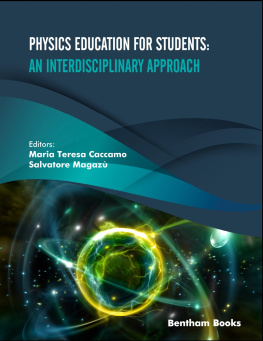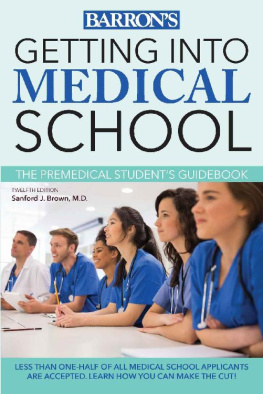1
In the past, the National School of Buenos Aires was an establishment for boys. In those distant days when it was knowna as the School of Moral Sciences, or in the even more remote era when it was called The Royal College of San Carlos, things must have been more straightforward, more orderly. Its simple: eactly half of the world it now contains werent there. The half made up of jumpers, hairbands, ribbons and hair-slides, the half that required the installation of separate toilets in the school and separate changing rooms on the playing fields, once, a long time ago, in the days of Miguel Can, or Amadeo Jacques, simply didnt exist. The school was a single entity, all boys. In those days, all the school activites must have taken place in a much calmer atmosphere. Or at least this is what the class assistant for the third year class ten thinks, as her mind begins to wander near the end of the second afternoon break. Everyone knows her as Mara Teresa, unaware that in the evenings, at home, she is known as Marita. This is what she, the teaching assistant for the third year class ten, is thinking absentmindedly, although she is apparently paying close attention, when more than eight minutes of the ten-minute break have already gone by. She thinks this without realising that, if the conditions from those days of the schools splendour still applied, she herself would not be able to occupy the position she currently occupies at the school, because just as there had been no girl pupils, there had been no female teachers, and no female assistants. Contrary to the present situation, in those days this world was not split in two: the main aim back then, as can be seen from the schools literary classic called Juvenilia (which the current crop of students, out of ignorance or spite, insist on calling Juvenilla), was probably something quite different: to ensure the pacific co-existence of boys from Buenos Aires with those from Argentinas interior provinces. This mix often gave rise to disturbances, even unseemly brawls which ended in cuts and bruises, and yet none of that was anything like what it takes to keep a close eye on this other reality of males and females in close proximity. After all, for boys from Buenos Aires to fight provincials was nothing more than the expression of a deep-seated truth about Argentinian history. It served to demonstrate that the school was already what it had been intended to be: a select microcosm of the entire nation. Had not Bartolom Mitre, the schools founder, happily defeated Urquiza, from Entre Ros province, at the battle of Pavn? Had not the federalist tyrant Juan Manuel de Rosas kept the school closed during the dark period of his rule that had afflicted Argentina for so many years? Had not Domingo Sarmiento, born in San Juan province, unsuccessfully tried to enrol at the school? And did not the boy from Tucumn, Juan Bautista Alberdi, succeed where Sarmiento had failed, giving rise to a feeling of resentment that lasted throughout the remainder of Sarmientos life? The fights between pupils of Buenos Aires and the provinces were part of the schools history because the school itself was part of the nations history. Miguel Can writes about this openly in Juvenilia. No matter that todays pupils talk about the book as if they had never heard of it; in reality, they have all read it and are well aware of the significant fact that the school made no distinction between students from the northern provinces and those born in Buenos Aires. Ensuring the peaceful co-existence of these two groups was perfectly possible for a master like Amadeo Jacques, who was born in France, or for a Headmaster like Santiago de Estrada. But the school then had been only for boys. Mara Teresa is merely letting her mind wander rather than making comparisons, but she knows her job as an assistant is very different nowadays. She has no illusions that she can cast herself in the same mould as those illustrious male predecessors; as she stands in the playground gazing blankly around her she simply allows one thought after another to slide by, and in this daydream imagines what the more homogeneous, more harmonious version of the school that existed in the nineteenth century, in another age, must have been like. The sound of the bell, which the others usually calculate precisely, startles her out of her daydream: the end of break. The bell rings firmly but not stridently for exactly fifty-five seconds, just short of a minute. Everyone is aware of this. There is a very precise reason why they should know this, and for their timing to be as exact as the sound itself instead of allowing themselves the rough approximation of a minute. That is because the moment the bell stops ringing (and without its echo being considered part of the process), all the pupils must line up, in total silence and in ascending order of height, outside their classroom door.
Third year class ten lines up in front of the penultimate door in the quad. Quite often, footsteps, a shoe scraping against the ground, sometimes even a laugh can be heard after the bell has ceased to ring, and then it is the assistants job to step in.
Silence, ladies and gentlemen.
After this warning, there ought to be no noise at all. If the earlier sound was a sign that someone was slow to respond, the assistants have to make sure that following this carelessness the pupils are absolutely quiet. If, on the other hand, there was the more serious offence of a laugh or the suggestion of laughter, they have to try to identify the joker (who in all likelihood would persist in their misdeed), take him or her out of the line, and proceed to punish them. The culprits usually gave themselves away by staring at the ground.
More often than not, however, the order to be silent is strictly obeyed.
Step apart.
A single voice echoes all round the quad. Because of the height of the roofs or the thickness of the walls, the sound seems to rebound and multiply, but despite this, everyone knows nothing has been repeated, that orders are given only once, and that this is enough.
Stepping apart is a fundamental part of teaching the pupils how to behave properly. Even though they are now in lines, and even though they correctly position themselves from smallest to tallest, until they have stepped apart, the pupils still look disorderly, grouped but not formed up. They look untidy, and that is intolerable. Once they have stepped apart, however, the double line has an orderly, structured appearance, creating an appropriate symmetry. To step apart the pupils must raise their right arms without of course bending the elbow and rest their hands (even better if it is just the tips of their fingers) on the right shoulder of the classmate in front. Since by definition this classmate is smaller than the one behind, each arm makes a perfectly straight line but slopes gently downwards. That is how it is and always has been. The girls form up in front, the boys behind. Although she tries to do so discreetly, Mara Teresa focuses her attention on the most problematic link in the chain, the point where the two smallest boys follow on from the two tallest girls. In general, the smallest boys are those who still look like smooth-cheeked infants, whereas the tallest girls are always the most mature. When instructed to step apart, those two boys (who in third year class ten are Iturriaga and Capeln) have to place their hands or better still, the tips of their fingers on the shoulder of the girls in front (in third year class ten that means Daciuk and Marr). The shoulders are quite far away, and are higher than them, so the boys almost have to stretch in order to reach them. Mara Teresa examines the point of contact closely. Of course, her concern is not the height difference, or that by stretching out their arms Iturriaga or Capeln might lose their posture. It is not that, nor is it the vigorous gesture their arms make as they straighten and aim upwards. No, it is something else. Mara Teresa has to pay particular attention to what happens to those boys hands on each girls shoulder for as long as this stepping apart lasts and this is something which, unlike the bell for the end of break, does not go on for a fixed, predetermined length of time, but depends on the personal decision of Seor Biasutto, the supervisor of the team of assistants.









